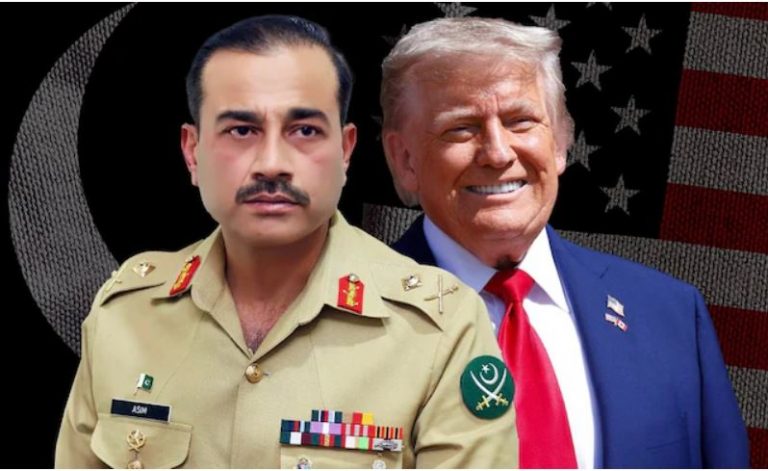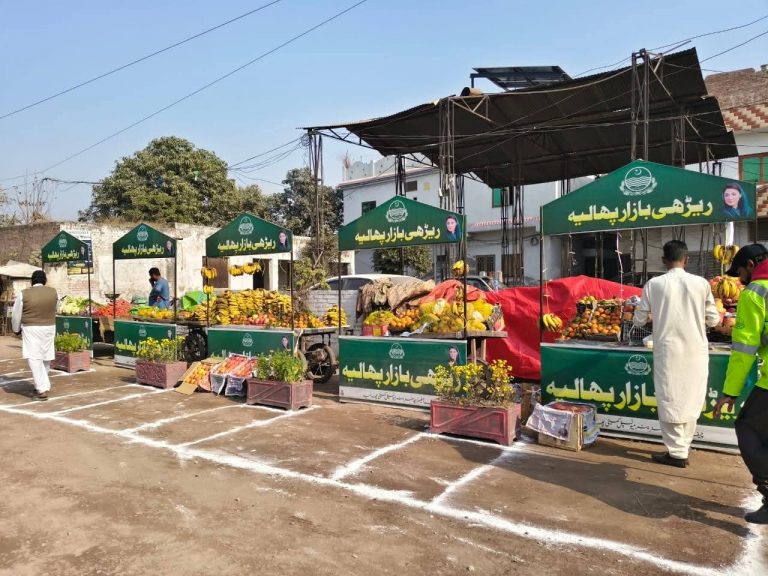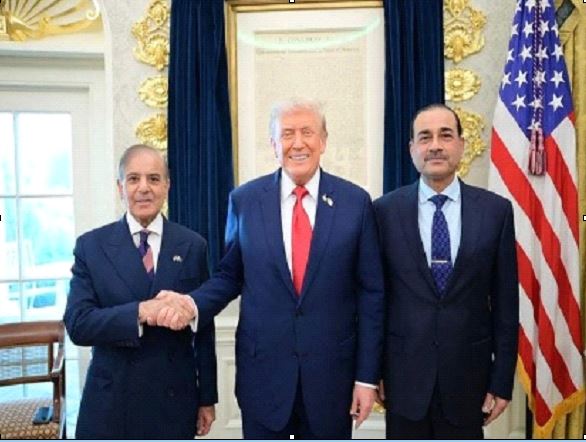
(By Nida Shah & Kainat Rajput)
Trade remains one of the strongest pillars of Pakistan–United States relations, symbolizing cooperation, trust, and a shared vision for economic progress. Over the years, both countries have moved beyond traditional diplomacy to forge a forward-looking partnership rooted in commerce, investment, and innovation.
The United States continues to stand among Pakistan’s largest trading partners, with bilateral trade reaching record levels in recent years. Pakistan’s exports of textiles, leather goods, and agricultural products have gained a strong foothold in the U.S. market, while American machinery and technology continue to support Pakistan’s industrial modernization. This steady exchange reflects a relationship built on mutual benefit, resilience, and shared prosperity.
Strengthening Bilateral Trade
In the fiscal year 2024–2025, Pakistan’s exports to the United States grew by more than 10 percent, crossing USD 6 billion, compared to USD 5.4 billion in the previous year. Overall bilateral trade reached nearly USD 7.6 billion, marking a 16 percent year-on-year increase. Pakistan maintained a trade surplus of about USD 2.5 billion, with exports outpacing imports — a testament to its growing export competitiveness. The United States remains Pakistan’s single largest export destination, absorbing nearly one-fifth of total Pakistani exports. These figures demonstrate how vital U.S. trade ties are to Pakistan’s external sector, especially amid global economic volatility.
Textiles and Manufacturing at the Core
Textiles form the backbone of Pakistan’s exports to the United States, accounting for the majority of trade. In 2025, categories such as ready-made garments, knitwear, and cotton fabrics dominated shipments. Men’s apparel, T-shirts, and home textiles performed particularly well, while women’s wear and leather goods also showed steady growth.
The textile industry, employing millions across Pakistan, benefits immensely from its access to the U.S. market. For the United States, Pakistan offers a reliable supply of high-quality cotton and leather products that support American fashion and retail industries. In return, U.S. machinery, industrial inputs, and agricultural technology help boost Pakistan’s productivity, demonstrating a cycle of shared growth.
Expanding Frontiers: Green Growth and Digital Cooperation
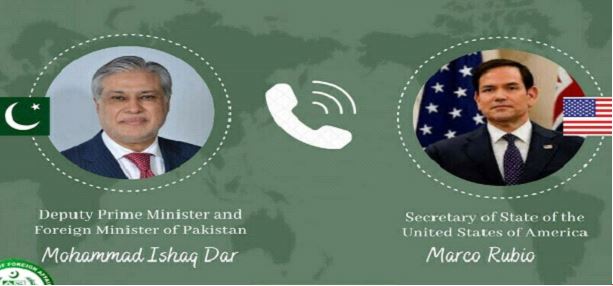
Beyond traditional trade, the two nations are deepening collaboration in renewable energy, digital technology, and entrepreneurship. The U.S.–Pakistan Green Alliance, launched to advance sustainable development, is now a centrepiece of economic cooperation. It focuses on renewable energy transitions, climate-resilient agriculture, and water management. In 2024 and 2025, several Green Alliance dialogues were held in Islamabad and Washington, where officials and private-sector leaders discussed clean-energy investment, agricultural reforms, and innovation. American firms are now involved in Pakistan’s solar and wind power projects in Sindh and Baluchistan, while joint research programs in universities promote environmental sciences and sustainable farming.
Parallel to green cooperation, digital partnerships are expanding rapidly. U.S. tech companies have started mentoring programs for Pakistani startups and freelancers, helping integrate Pakistan’s vibrant IT workforce into global value chains. The digital economy is becoming a new pillar of bilateral cooperation — one that promises jobs, innovation, and inclusion.
Investment and Industrial Opportunities
As Pakistan’s economy diversifies, opportunities for deeper American investment continue to grow. U.S. companies have shown increasing interest in Pakistan’s renewable energy, mining, logistics, and digital infrastructure sectors. These ventures are supported by platforms such as the U.S.–Pakistan Business Council and the American Business Forum, which facilitate trade missions, investment dialogues, and corporate partnerships.
Discussions have also focused on enhancing tariff frameworks and simplifying regulations to improve the ease of doing business. The United States remains a key source of foreign direct investment in Pakistan’s energy, manufacturing, and services sectors. American interest in Pakistan’s rich copper and lithium reserves — essential for clean-energy technologies — signals future cooperation aligned with global sustainability goals.
Shared Economic and Strategic Interests
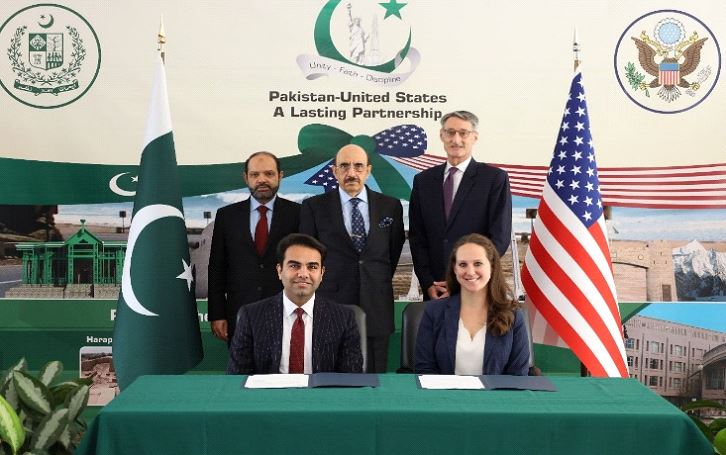
For Pakistan, trade with the United States provides not only economic value but also opportunities for technological advancement and workforce development. Access to the U.S. market allows Pakistan to diversify exports and modernize industries, contributing directly to national growth. For the United States, Pakistan represents a strategic partner in South Asia — a market of over 240 million people and a gateway to regional trade routes. As Pakistan expands its digital and manufacturing capacities, American investors view the country as an emerging hub for affordable production and human capital. This alignment of interests strengthens the long-term strategic and economic foundation of their relationship.
Challenges Ahead
Despite the steady progress, challenges persist. Pakistan’s export portfolio remains heavily dependent on textiles, exposing it to market fluctuations and global competition. To sustain momentum, Pakistan must diversify its exports, invest in innovation, and enhance product quality to meet international standards.
Both countries also face challenges related to tariff policies, trade logistics, and global economic instability. Inflationary pressures, climate risks, and supply-chain disruptions have created uncertainty worldwide. However, these shared challenges offer an opportunity for cooperation in areas such as digital trade, sustainable agriculture, and capacity building. By deepening institutional dialogue and supporting private-sector collaboration, Pakistan and the United States can transform these challenges into engines of growth.
Toward a Future of Shared Prosperity
The evolving economic relationship between Pakistan and the United States is no longer defined by aid but by ambition. The focus today is on partnership — leveraging Pakistan’s manufacturing capacity and youthful workforce with America’s technology, capital, and innovation. Both nations understand that sustainable prosperity depends on collaboration rather than dependency. The U.S.–Pakistan Green Alliance and ongoing trade dialogues exemplify a shift toward modern, purpose-driven engagement. Through education, entrepreneurship, and joint ventures, both sides are crafting a partnership that supports regional stability and long-term growth.
Conclusion
The trade relationship between Pakistan and the United States stands as a model of shared prosperity and trust. With bilateral trade exceeding USD 7.5 billion and expanding cooperation in renewable energy and digital technology, the partnership continues to evolve dynamically. As Pakistan modernizes its economy and the United States seeks resilient partners in South Asia, their collaboration reflects mutual respect and forward vision. When trade grows, trust deepens; when economies connect, nations prosper. The Pakistan–U.S. economic partnership grounded in innovation, sustainability, and shared purpose — is poised to remain a cornerstone of progress and prosperity for both nations in the years to come.


